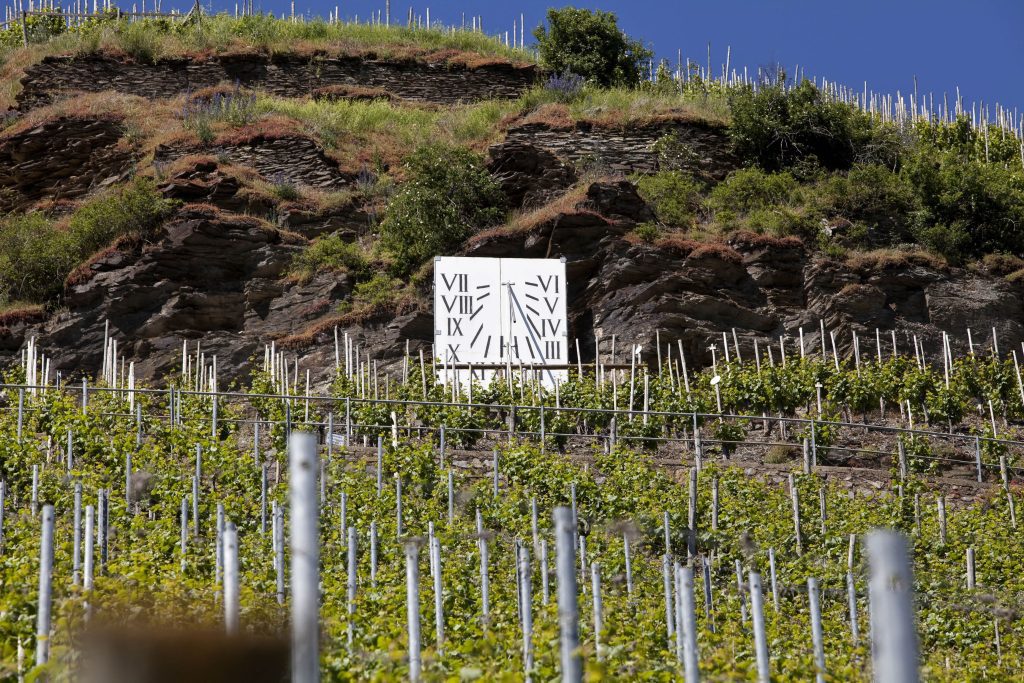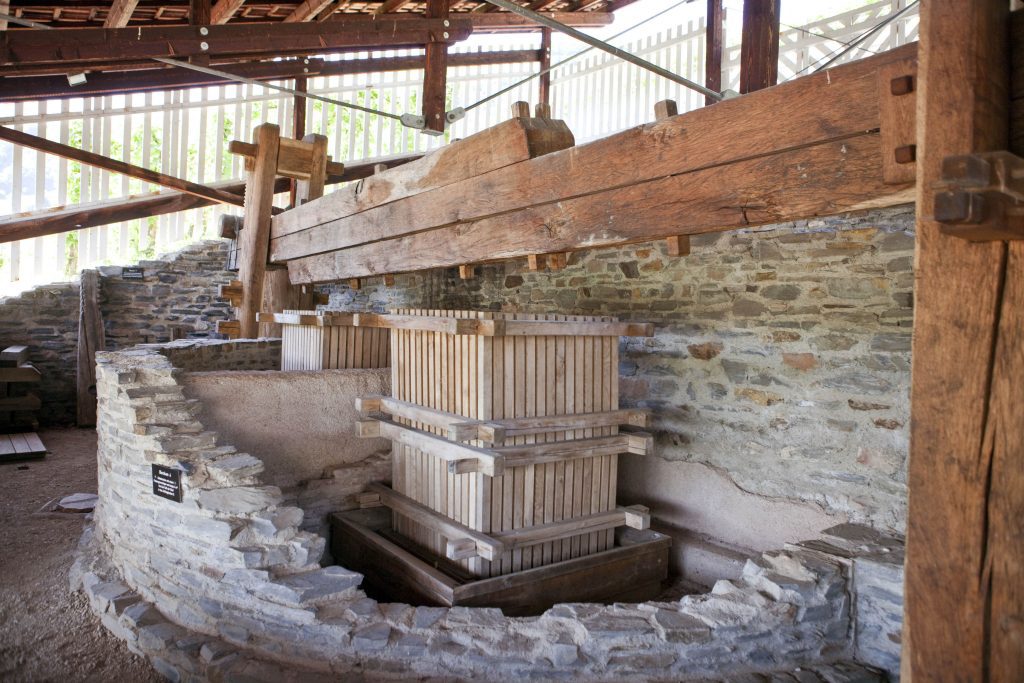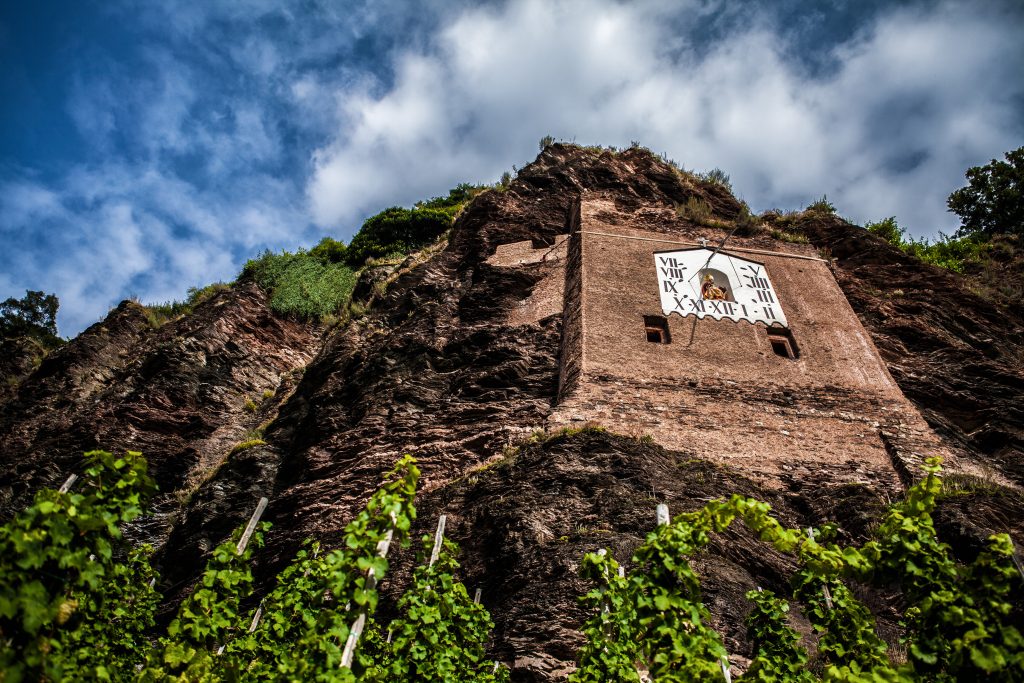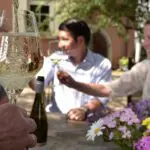Where is the world’s steepest vineyard? How old is Germany’s oldest cellar? How many vines fit into the Mosel regions … Here is some (almost) useful Mosel trivia to know when travelling Mosel on a wine tour – or to casually drop at your next Riesling tasting

Mosel may not be the biggest of Germany’s wine regions, but it is certainly the best known. The region fits about 60 million vines onto almost 9,000 hectares (that’s the area of about 12,000 soccer pitches).
Near Piesport, you will find the world’s only vineyard that is accessible by boat only: the Piesporter Erzlay is not an island – yet the only access got permanently flooded in the 1950s. The micro-vineyard with 500 vines is kept financially viable with an adopt-a-vine scheme.
The local celtic tribes had their forms of alcohol long before the romans arrived in the Mosel region. Yet the romans were the first to commercialise it and grow wine at agricultural scale in the first century. At that time, adding flavors with spices, honey and more obscure ingredients was not only legal, but a respected way to improve and stabilize wines. Ruins and reconstructions of roman wine presses can be visited in Piesport, as well as in Erden and Brauneberg.

The foundations of the oldest winecellar in Germany can be traced back to roman times, too. Parts of the cellar of winery Vereinigte Hospitien in Trier have been built 330 ac. Book a cellar tour to visit.
In medieval times, starting with the baptism of the Europan emperors around 800 and lasting until Napoleonic period, commercial wine production was monopolised by the Church and its monasteries. Still today some wineries, such as the Bischöfliche Weingüter in Trier are owned by the catholic church.
No place in the world features more Riesling than the Mosel wine region: solid 5,400 hectares are planted with Riesling, altogether 62% of the entire wine region. There are some very good wines made from Elbling, a very regional varital, and from white pinot grapes . Only 9% of the Mosel region is planted with dark grapes – Pinot Noir. A comeback after the Nazis had vorbidden Pinot Noir in 1933. Expect the share of Pinot Noir (aka Spätburgunder) to grow as many Mosel vintners are diversifying their programme away from just-white-wines.
The vineyard with the largest amount of owners in Mosel is the Erdener Prälat – 14 winemakes own and cultivate blocks in the 1.5 hectare (3.7 acres) large plot. Top estates such as Marcus Molitor, Dr Loosen and Meulenhof are part of the lucky owners.
The Bernkasteler Doctor is one of the most famous vineyards of Germany. In 1900 Geheimrat Julius Wegeler purchased a small parcel of 4300 squaremeters – and paid 100 Goldmarks per vine.. that would correspond to 80,000 Euro per plant at todays gold value. While the price sounds ridicoulous, it also included a cellar with several matured vintages.
The world’s most expensive bottles of white wines are produced in Mosel: The 2003 Scharzhofberger Trockenbeerenauslese from Egon Müller auctioned 2019 in Trier for 12,000 Euro per 0,75-bottle, adding fees and taxes each bottle was at a price of 15,000 Euro (today’s price is at 25,000 Euro/bottle).
More than half of Mosel’s vineyards are considered very steep. The Calmont near Bremm is considered one of the worlds steepest vineyard – featuring slopes that average 68% incline, with many blocks connected by ladders and ropes.

The Mosel area features plenty of big and small sun-dials (‘sonnenuhr’) prominently loated on south facing vineyard slopes. The german term for sun-dial feature in 6 famous vineyard names, such as ‘Ürziger Wonnenuhr’ or ‘Wehlener Sonnenuhr’. More curiosities: The sun-dial in Whelen is the only one in the region that doesn’t feature the 7hrs mark. The sun-dial in Ürzig is the only one to feature roman numerals.
The cartography and classification of the Mosel vineyards commissioned by the Prussians in 1868 is as old as the classificaiton vineyards in Bordeaux.
Need help preparing a wine tour to the Mosel region? Check this for self-guided Mosel tours, or contact BottleStops for an offer.








